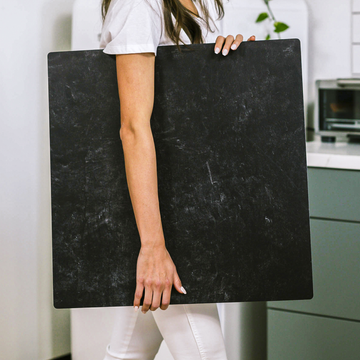Picture a slice of rich chocolate cake. Now imagine it photographed on three different surfaces: a sleek black slate, a rustic wooden table, and a pristine white plate. Though the cake remains identical, each backdrop tells a completely different story about its flavor and origin. This isn't just artistic preference - it's food psychology in action.
Why Your Backdrop is a Silent Salesman
Your food photography backdrop does more than provide a neutral background - it actively shapes how viewers perceive taste, quality, and authenticity. Studies in neurogastronomy show that:
- Warm-toned surfaces (wood, terracotta) enhance perceived richness and sweetness
- Cool surfaces (marble, slate) suggest freshness and crispness
- Textured materials (linen, distressed wood) increase perceived authenticity by 34%
The Physics of Food Photography
Beyond psychology, your backdrop choice dramatically affects lighting:
- Matte surfaces absorb light for soft, even shadows - perfect for soups and beverages
- Glossy surfaces create dramatic highlights - ideal for cocktails and glossy desserts
- Textured materials naturally fill shadows when placed opposite your light source
The Imperfection Paradox
Here's a counterintuitive truth: slightly "flawed" backdrops often perform better than perfect ones. A chipped vintage plate or wood board with visible grain:
- Triggers subconscious associations with homemade quality
- Creates visual interest without distracting from the food
- Adds depth and dimension to flat compositions
Try this experiment: photograph the same dish on both a flawless white surface and a slightly weathered wood board. Notice how the "imperfect" version suddenly feels more authentic and appetizing.
Future-Proof Your Food Photography
While traditional materials remain essential, emerging technologies are changing the game:
- Smart surfaces with adjustable colors and patterns
- AI-generated backdrops for virtual testing before shoots
- Projection mapping for dynamic lighting effects
Whether you're shooting for Instagram or product packaging, remember: your backdrop isn't just a background. It's a powerful psychological tool that can make food look more delicious, authentic, and irresistible.
Ready to put this into practice? Start by auditing your current backdrop collection with fresh eyes - you might discover untapped potential in surfaces you've overlooked.



